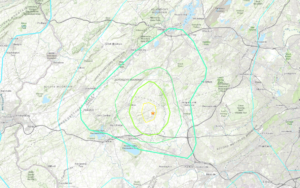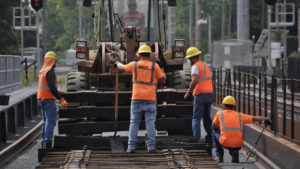FRA issues regs on HOS for passenger crews
Written by jroodThe U.S. Department of Transportation issued a final rule limiting the number of consecutive hours passenger railroad workers can be on the job. The new rule aims to reduce risk and improve safety and, for the first time, differentiates between freight and passenger service.
The U.S. DOT is utilizing "fatigue science" to design employee work
schedules to determine maximum on-duty periods and minimum off-duty
periods. The FRA rule is the first rule issued as part of a broad
initiative to bring scientific data into work scheduling.
"Safety
is job one, and by focusing our attention on proactive risk reduction
strategies like these, we will be able to reduce the number of accidents
on our railways," said Department of Transportation Secretary Ray
LaHood. "This new program will let us recognize and prevent fatigue
problems for passenger train crews before they arise."
Through the
use of fatigue modeling tools and data on human alertness factors, this
new rule will guide the scheduling of train crews to reduce the
likelihood of a hazardous work schedule. This rule recognizes the
difference between work during daylight hours and work during nighttime
hours when fatigue is most likely to occur. The final rule includes:
•
Maximum on-duty periods and minimum off-duty periods for passenger
train employees including locomotive engineers, and conductors.
•
Requirements for railroads to identify schedule-specific risks of
fatigue using an approved, scientifically validated, and calibrated
bio-mathematical model of human performance and fatigue.
• Requirements for railroads to develop and carry out plans to mitigate fatigue risks before safety may be compromised.
The
final rule also requires railroads to submit certain work schedules of
their passenger train employees and fatigue mitigation plans to FRA for
approval and to provide fatigue training. Fatigue management is also a
key part of FRA’s Risk Reduction Program-an industry, labor, and FRA
initiative designed to improve safety and build strong safety cultures.
It seeks to identify and correct safety risk factors using predictive
data beyond the traditional accident and injury data currently used.
Recognizing risk indicators before an accident happens provides one of
the greatest opportunities for improved safety and performance.
This
final rule is authorized by the Rail Safety Improvement Act of 2008,
which, for the first time in history, gives FRA the authority to replace
the existing statutory limitations (first enacted in 1907) with a new
set of hours of service regulations governing train employees providing
passenger rail transportation. The final rule was developed with the
assistance of FRA’s Railroad Safety Advisory Committee, which includes
representatives from the railroad industry, railroad labor, and other
stakeholder groups.





